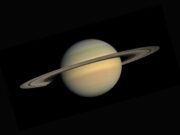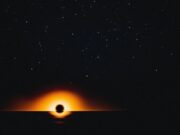The pressure is off and high temperature superconductivity remains
High temperature superconductivity is a grail of modern physicists. As room temperature superconductivity (RTS) has been reported recently in hydrides at megabar pressures, the...
Changes in Earth’s orbit enabled the emergence of complex life
'Snowball Earth' is the most extreme climate event in Earth's history, when it was completely engulfed in ice. The theory of its existence has...
Methane in the plumes of Saturn’s moon Enceladus: Possible signs of life?
A study published in Nature Astronomy concludes that known geochemical processes can’t explain the levels of methane measured by the Cassini spacecraft on Saturn’s icy moon.
An...
Kepler space telescope glimpses population of free-floating planets
A study led by Iain McDonald of the University of Manchester, UK, (now based at the Open University, UK) used data obtained in 2016...
Ancient diamonds show Earth was primed for life’s explosion at least 2.7 billion years...
Earth's atmosphere was primed for an 'explosion' in the diversity of life as early as 2.7 billion years ago, a study of ancient diamonds has revealed....
Astronomers discover an oversized black hole population in the star cluster Palomar 5
Palomar 5 is a unique star cluster. In a new paper, astrophysicists show that distinguishing features of Palomar 5 are likely the result of...
Ancient bone carving could change the way we think about Neanderthals
Evidence continues to mount that our Neanderthal brethren may have been more sophisticated than we give them credit for. Artsy even. And researchers point...
Why does Mercury have such a big iron core? Magnetism!
A new study disputes the prevailing hypothesis on why Mercury has a big core relative to its mantle. For decades, scientists argued that hit-and-run...
Observation, simulation, and AI join forces to reveal a clear universe
Japanese astronomers have developed a new artificial intelligence (AI) technique to remove noise in astronomical data due to random variations in galaxy shapes. After...
Earth’s cryosphere is shrinking by 87,000 square kilometers per year
A new study reports the first global assessment of the extent of snow and ice cover on Earth's surface -- a critical factor cooling...
Physicists observationally confirm Hawking’s black hole theorem for the first time
Study offers evidence, based on gravitational waves, to show that the total area of a black hole’s event horizon can never decrease.
There are certain...















